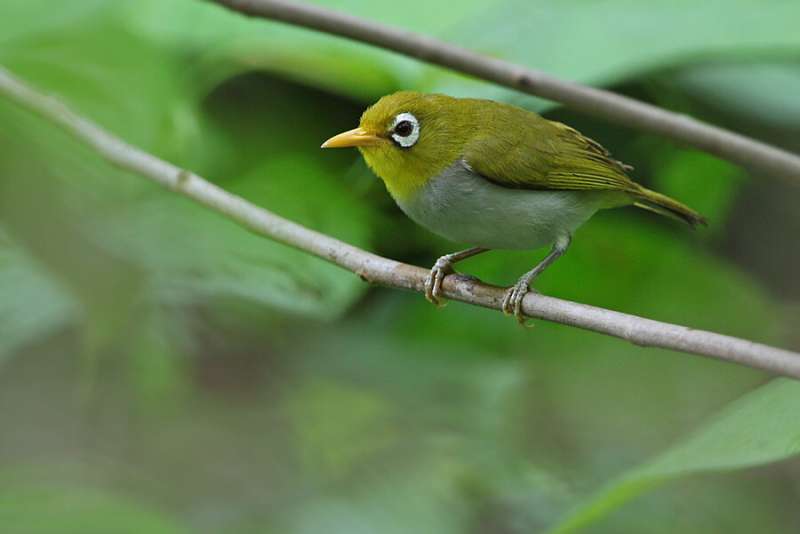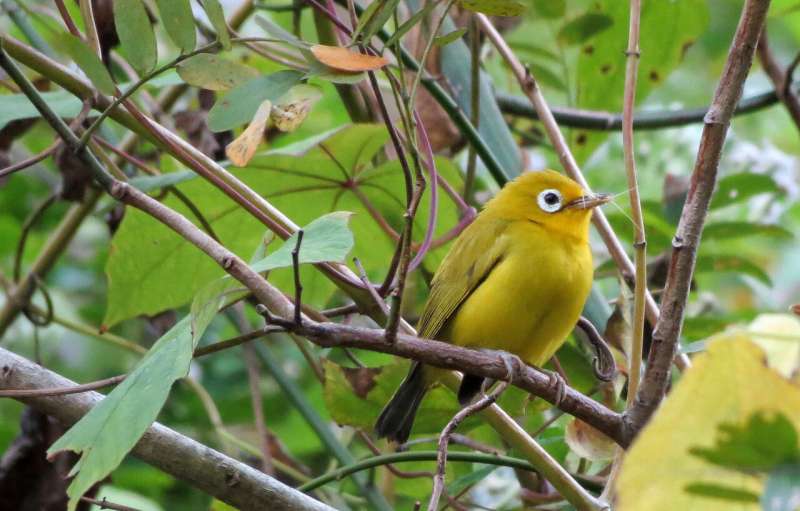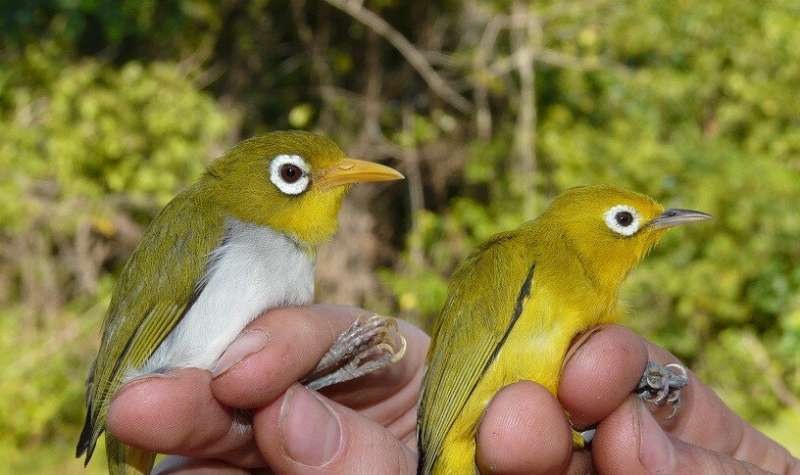Zoologists discover two new bird species in Indonesia

Zoologists from Trinity College Dublin, working with partners from Halu Oleo University (UHO) and Operation Wallacea, have discovered two beautiful new bird species in the Wakatobi Archipelago of Sulawesi, Indonesia. Details of their discovery—of the Wakatobi white-eye and the Wangi-wangi white-eye—have been published today (April 24) in the Zoological Journal of the Linnean Society, which is the same journal in which Alfred Wallace and Charles Darwin published their game-changing original ideas about speciation in 1858.
Precisely defining what a species is and how species arise has intrigued scientists for centuries, and while we may feel we intuitively know what a species is, the closer we look the more complicated things become. For example, when considering closely related populations of organisms, it can be very hard to decide where to draw the line. Recent research has found that many distinct species inter-breed to some extent, blurring the lines further.
Even if we accept the complications inherent in the definition of species, there is still so much we have to learn about how new species arise. Thinkers from Aristotle to Charles Darwin and onwards have spent their lives working to understand this topic. Now, Professor Nicola Marples' research group from Trinity College Dublin's School of Natural Sciences has shed some more light on this evolutionary puzzle.
Sulawesi
Prof Marples' group has been studying birds on Sulawesi, in Indonesia, and its offshore islands since 1999. Sulawesi is a particularly peculiar island known for its weird and wonderful plants and animals. It lies in the middle of Indonesia, at the boundary between Asian and Australian species, and has an unusually high number of endemic species (unique species found nowhere else), due to the deep ocean trenches that isolated Sulawesi from other land masses, even during past ice ages, when ocean levels dropped.

Working with partners from UHO the Trinity team has been cataloguing the unique biodiversity of Sulawesi for 20 years. Using a modern research approach to the question of species separation, the team incorporates genetic, body size and song measures as a means of comparing organisms. Differences in bird song are particularly important as birds use their songs to find their mates; if separated populations of birds sing different songs, they won't interbreed, which enables them to evolve in different directions. Eventually, after a number of generations, birds in the different populations may be sufficiently different to be classified as unique species.
The Wakatobi white-eye and Wangi-wangi white-eye
One of the birds (the Wakatobi white-eye) has been caught up in the species debate for some time, as ideas about how to define a species changed from the early 20th century to the current day. The other (the Wangi-wangi white-eye) remained unnoticed until the beginning of the 21st century when Prof Marples' research group visited the island from which it takes its name.
White-eyes as a group have spread and speciated more rapidly than any other birds. They are adaptable, feeding on a wide variety of fruits, flowers and insects. White-eyes are also supreme island colonisers, which is why so many different white-eye species have evolved so rapidly, as different island populations become isolated and split off from their source population.

The two new white-eye species found by Trinity and UHO follow this trend; they are both found on the Wakatobi Islands, just off mainland South-east Sulawesi. However, the two species could not be more different. The Wakatobi white-eye is found throughout the Wakatobi Islands and split from its mainland relatives in the last 800,000 years. In contrast, the Wangi-wangi white-eye is a much older species found on only one tiny island, with its closest relatives found more than 3,000 km away! While this is an incredible discovery, living on only one tiny island means the Wangi-wangi white-eye is very vulnerable to habitat loss.
Professor in Zoology, in Trinity's School of Natural Sciences, Nicola Marples, said: "To find two new species from the same genus of birds in the same island is remarkable. The Wangi-wangi White-eye is a particularly special discovery, as it is found on only one tiny island and its closest relatives live more than 3,000 km away."
Lead author of the journal article, Dr. Darren O'Connell, who recently completed his Ph.D. in Trinity's School of Natural Sciences and is now working at University College Dublin, added: "These discoveries are not just of evolutionary interest—they will also be of real conservation relevance. By highlighting the unique species special to the Wakatobi Islands we can help safeguard the remaining habitats on the islands, which are under huge pressure. We ultimately hope to have the islands recognised as an Endemic Bird Area so that they receive more conservation support."
Journal information: Zoological Journal of the Linnean Society
Provided by Trinity College Dublin



















